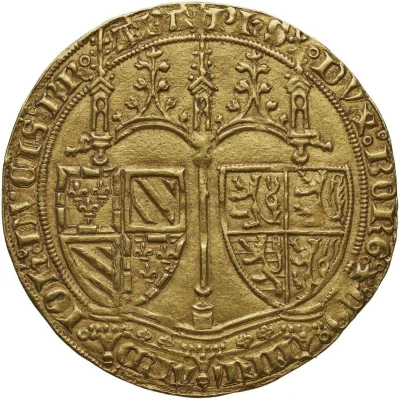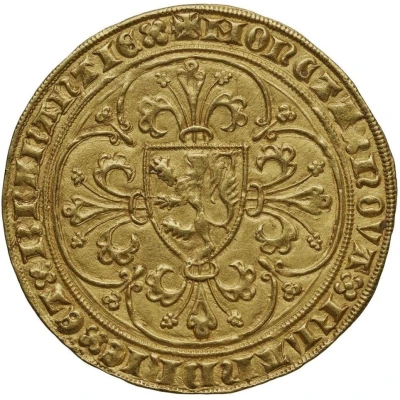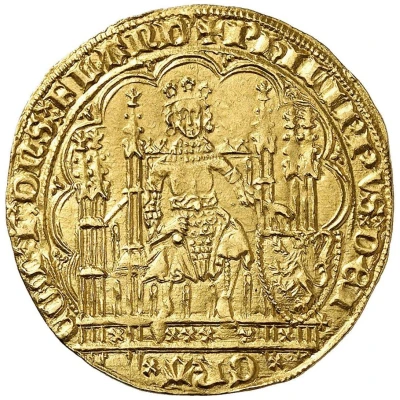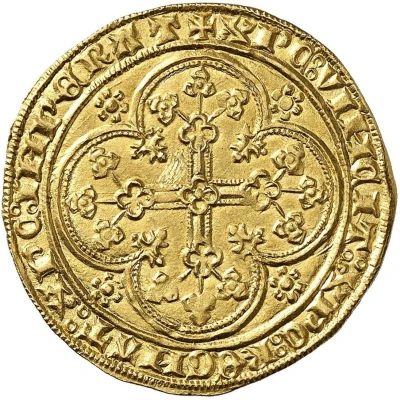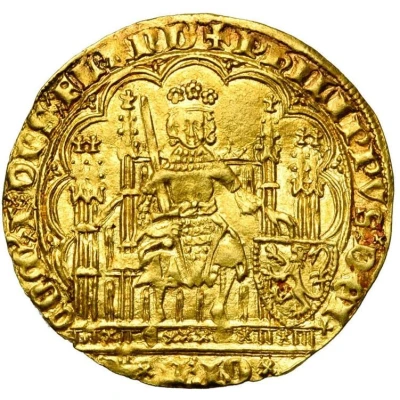
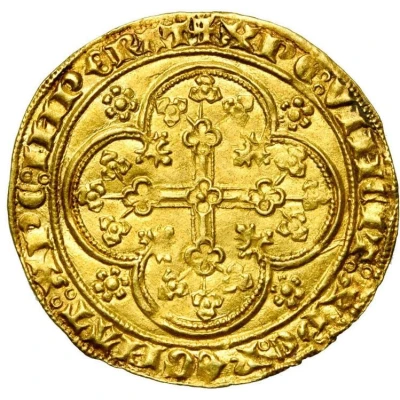

© Jean Elsen & ses Fils s.a.
Gold Écu - Philip the Bold ND
| Gold | 4.4 g | - |
| Issuer | Burgundian Netherlands (County of Flanders, Belgian States) |
|---|---|
| Duke | Philip the Bold (1384-1404) |
| Type | Standard circulation coin |
| Years | 1384-1386 |
| Value | 1 Gold Ecu (Gouden schild) |
| Currency | Groot (864-1506) |
| Composition | Gold |
| Weight | 4.4 g |
| Shape | Round (irregular) |
| Technique | Hammered |
| Demonetized | Yes |
| Updated | 2024-10-04 |
| Numista | N#309982 |
|---|---|
| Rarity index | 100% |
Reverse
Ornate, floriate triple cross inside a quadrilobe, a rosette in each exterior angle.
Script: Latin (uncial)
Lettering: ✠ XPC ⵓ VINCIT ⵓ XPC ⵓ REGNAT ⵓ XPC ⵓ INPERAT
Lettering (regular font): ✠ XPC ⵓ VINCIT ⵓ XPC ⵓ REGNAT ⵓ XPC ⵓ INPERAT
Translation: Christ conquers, Christ rules, Christ commands
Comment
Philip briefly used the same design as his father, Louis de Male, before issuing new coins in 1386Interesting fact
The Gold Écu - Philip the Bold ND (1384-1386) from Burgundian Netherlands (County of Flanders, Belgian States) is interesting because it was minted during a time of great political and economic change in Europe. The coin was issued by Philip the Bold, Duke of Burgundy, who was attempting to centralize power and create a unified currency across his territories. The Gold Écu was a new denomination introduced by Philip, and it was meant to replace the various local currencies that were in use at the time. The fact that it was made of gold and weighed 4.4 grams indicates that it was a valuable and significant coin, and its minting marked an important step towards the development of a standardized currency system in Europe.
